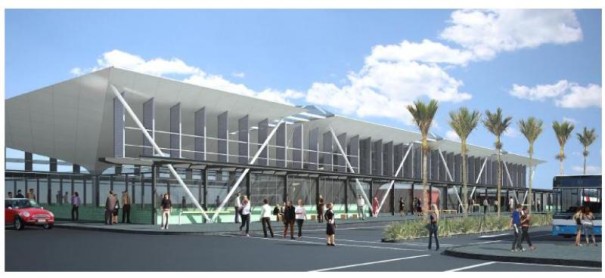New Lynn Transport Hub opening

I begin by greeting everyone in the languages of the realm of New Zealand, in English, Māori, Cook Island Māori, Niuean, Tokelauan and New Zealand Sign Language. Greetings, Kia Ora, Kia Orana, Fakalofa Lahi Atu, Taloha Ni and as it is the morning (Sign)
I then specifically greet you: Minister of the Crown, Hon Steven Joyce, Minister of Transport; Your Worship Bob Harvey, Mayor of Waitakere City; Rabin Rabindran, Chair of the Auckland Regional Transport Authority; Hon David Cunliffe, Member of Parliament for New Lynn; Mike Lee, Chair of the Auckland Regional Council; Distinguished Guests otherwise; Ladies and Gentlemen.
Thank you for inviting my wife Susan and I to the opening of the New Lynn Transport Hub. I have been asked to unveil a plaque to formally open this new facility, but before I join the Minister and Mayor in that endeavour, I would like to speak briefly of the significance of this event.
The opening of this new facility is yet a further step in the region wide investment in public transport and infrastructure in the Auckland region.
As one who grew up in Auckland, and lived here till work took us south to Wellington some 15 years ago, it is a pleasure to see the investment being made in the city’s rail network.
While there is a view that Auckland is a city dominated by cars, that was not always the case. In the 1950s there was an extensive 72km tram system as well as the train network. It is estimated that at that time, about 100 million passenger trips a year were taken in Auckland, when the city’s size was less than half its current population.
I fondly recall as a teenager in the 1950s taking the tram or train into the city and beyond. Taking the train was a bit of an adventure in those days as the carriages were something of bone rattlers.
Since those times, the loss of the tram network, and allure of the motor vehicle which saw greater investment into motorways than rail lines and public transport, the use of public transport plummeted.
The result was severe traffic congestion and the impact can be seen in many ways. First, Aucklanders have lost valuable time simply sitting in long traffic queues. The frustration and cost to them in time lost and petrol and diesel simply converted into fumes for no purpose has been immense.
Second, that cost is not simply borne by individuals who could have been at home enjoying time with their families. It also impacts on the whole of the Auckland economy. Congestion means it takes longer for goods and services to get to business and onward to export markets. Employers have had to count the cost of employees late to work because of traffic jams.
All this has been a dead weight on productivity, not only for Auckland but, given the size of the region’s economy, the whole of New Zealand. The reality is that when Auckland thrives, New Zealand thrives.
The ongoing investment in Auckland’s public transport is beginning to pay dividends. I understand that in the last financial year, public transport usage in Auckland increased by almost two million boardings on the previous year, hitting 60 million trips.
While this is still way below the figures of the 1950s, it is good to see the trend heading in a northwards and correct direction. Each car that can be taken off the road sees the remaining vehicles get to their destinations more quickly while also reducing greenhouse gas emissions.
Because they do not have to compete with cars and other vehicles on the road, trains have the ability to transport large numbers of people relatively quickly. However, given Auckland’s built landscape, adding additional rail lines, even with existing rail corridors, as the double-tracking of the Western Line has shown, is not easy.
That is where transport hubs such as this new state-of-the art facility at New Lynn are so important. By connecting buses and trains it is a further step towards what the planners call “seamless” public transport, where moving from one form of transport to another is simple and easy.
I therefore want to congratulate all the partners involved in bringing this project to fruition; the Auckland Regional Transport Authority, the Waitakere City Council, KiwiRail, the Auckland Regional Council and the Government.
To close I would like to quote from comments made by then United Nations Secretary-General Kofi Annan at a conference in Berlin 10 years ago. Noting that half of the world’s population lived in cities, and with that figure set to rise even further, he described this century as the start of the urban millennium. He said, and I quote: “The future of humanity lies in cities: in good urban governance and sustainable urban development. We need to make the urban revolution work for people, not against them.”
As a part of a wider plan to improve the transport options for the people of Auckland—New Zealand’s largest city—this new facility is a further step towards that vision. It is also a further step toward providing them with the modern 21st century public transportation network that they deserve and have long anticipated.
And on that note I will close in New Zealand’s first language Māori, by offering everyone greetings and wishing you all good health and fortitude in your endeavours. No reira, tēnā koutou, tēnā koutou, kia ora, kia kaha, tēnā koutou katoa.
